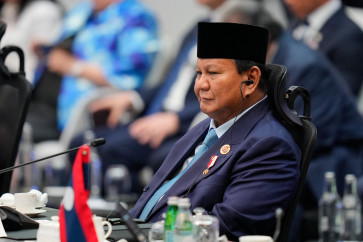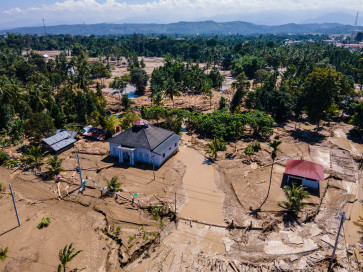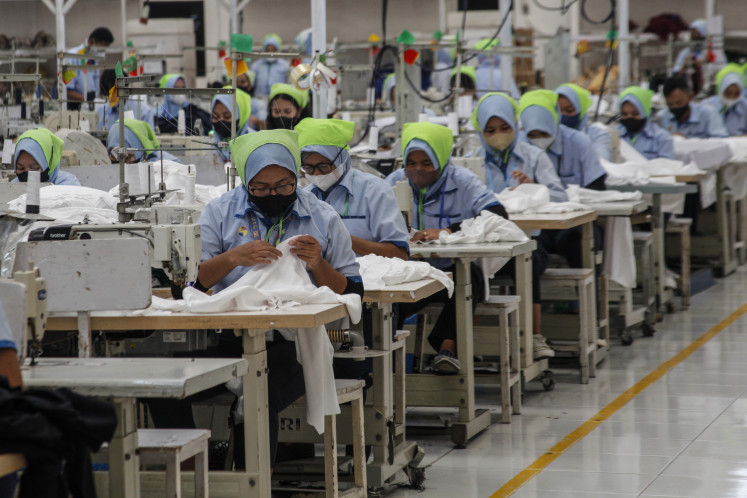Popular Reads
Top Results
Can't find what you're looking for?
View all search resultsPopular Reads
Top Results
Can't find what you're looking for?
View all search resultsEDITORIAL: Technology and job creation
Over 57 percent of workers are in vulnerable employment.
Change text size
Gift Premium Articles
to Anyone
S
et against the global economy and the world of work that have increasingly been reshaped by rapid changes in technology, the Indonesia Jobs Outlook 2017 report of the International Labor Organization (ILO) is quite interesting. Even though technology and jobs usually have a symbiotic relationship, technology also tends to be disruptive, causing job losses at least in the short term, as can be seen in the various sectors affected by digital technology.
The ILO report launched last week at a conference in Jakarta took note of the steady economic growth and falling unemployment rate in the country, but also underlined the slowdown in the pace of job creation in the manufacturing sector. Although in absolute terms, more Indonesians are employed in manufacturing, employment in this sector increased only slightly to 13.1 percent of the estimated 125 million-strong labor force in 2016, compared to 12.5 percent in 2006. Together services and trade now account for 46.7 percent of the employed.
Even though the Indonesian unemployment rate fell to 5.3 percent this year, the report cautioned that unemployment among youth was still 19.4 percent, a much higher rate than the global average. Over 57 percent of workers are in vulnerable employment.
The ILO strongly recommends a second wave of structural transformation to secure jobs in light of technological changes, moving away from the country’s heavy dependency on extractive industries and creating new sources of growth in manufacturing and high-value services.
This recommendation makes a stronger case for continued and even more public investment in skills development, because even though 20 percent of the national budget has been allocated for education, education quality and students’ learning achievement remain fairly low.
Many studies have concluded that, due to technological advancements, more and more routine tasks are being automated or being taken over by machines and jobs are becoming more polarized. Many jobs that involve routine tasks will be replaced by machines. In such an environment of change, skills development and human capital will play an even greater role in the future economic development of Indonesia.
The problem, though, is that Indonesia has a wide skills gap that urgently needs to be addressed; otherwise, future economic development will be constrained. The experiences of Vietnam and Thailand have shown one effective way of addressing the skills gap in the short to medium term, by massively expanding vocational education.
Implementing well-resourced, well-targeted vocational training can prove to be a better long-term investment in skills acquisition to help ameliorate the difficulties faced by workers, whose prospects look to be quite bleak.
The answer is that improved access to better vocational education can contribute greatly to higher incomes for workers and help bridge the skills mismatch that has caused what economists call structural unemployment, whereby existing job opportunities cannot be filled by the skills available on the job market. The government has increased budget appropriations for vocational training, but what is acutely lacking is a well-targeted vocational education.










